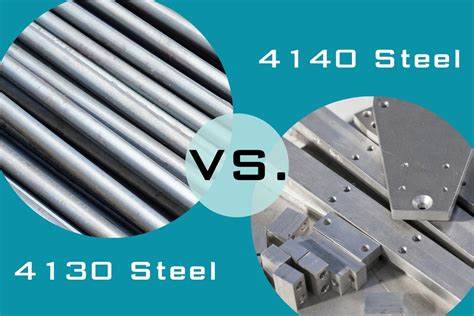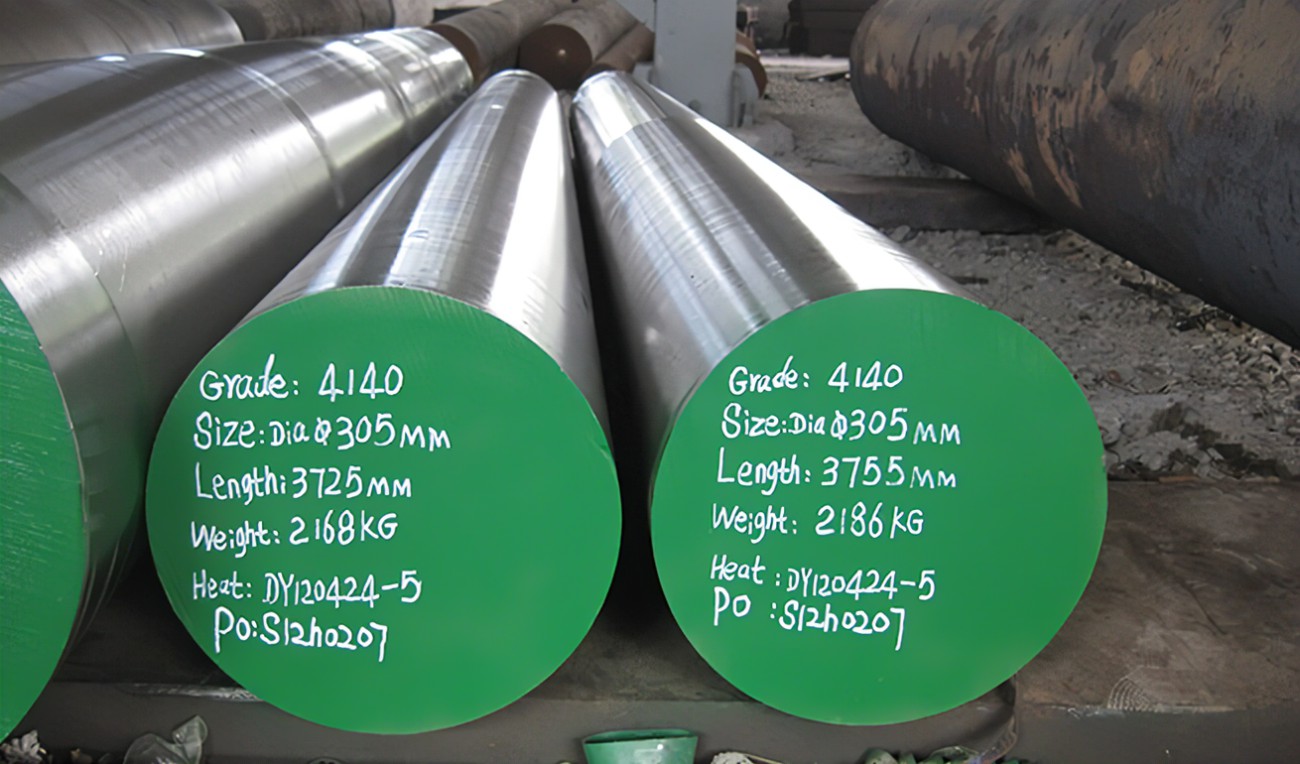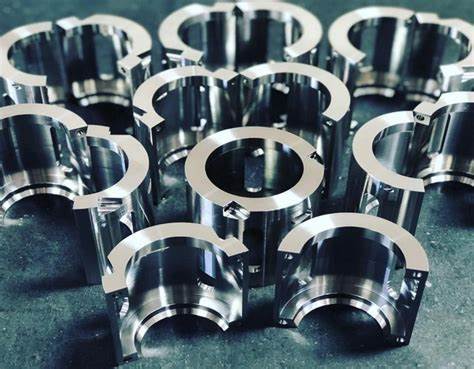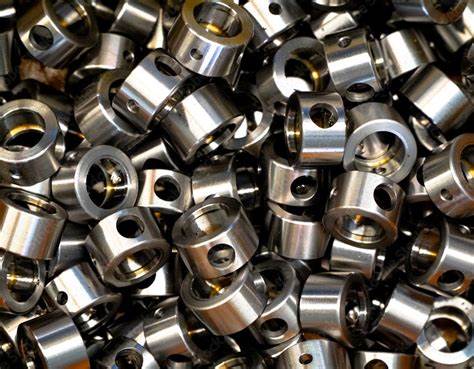Have you ever wondered about the backbone of our modern industries, where the strength and resilience of materials are crucial? Well, it's time to delve into the world of steel, specifically 4140 and 4130 steel. These two steel variants are not just any ordinary metals; they are high-strength, low-alloy steels celebrated for their toughness and wear resistance. But here's the twist - while they share some similarities, they differ significantly in composition, properties, and applications. This article is your guide to unraveling these differences, and I promise, it's going to be an enlightening journey!
Delving into Chemical Properties
Comparative Chemical Analysis of 4130 and 4140 Steel

When we look at 4140 and 4130 steel, their chemical compositions are a focal point. These are both low-alloy steels, but they have distinct differences in their makeup. The primary elements in both are carbon, chromium, and manganese, with 4140 steel also containing a significant amount of molybdenum.
● 4130 Steel: Typically contains 0.28-0.33% Carbon, 0.40-0.60% Manganese, 0.80-1.10% Chromium, and 0.15-0.25% Molybdenum.
● 4140 Steel: Contains more carbon, around 0.38-0.43%, with Manganese at 0.75-1.00%, Chromium at 0.80-1.10%, and a higher Molybdenum content of 0.15-0.35%.
Carbon Content: Impacts on Steel Characteristics
The carbon content in these steel alloys significantly impacts their mechanical properties. Higher carbon content, as seen in 4140, leads to increased strength and hardness but can reduce weldability.
● 4130 Steel: Lower carbon content makes it more weldable, with good toughness and strength-to-weight ratio.
● 4140 Steel: The higher carbon enhances tensile strength and yield strength, making it suitable for high-stress applications.
Role of Manganese, Chromium, and Molybdenum
These elements greatly influence the steel properties:
● Manganese: Increases hardenability and tensile strength. 4140 has more manganese, which contributes to its higher strength.
● Chromium: Improves corrosion resistance and hardenability. Both steels have similar chromium levels, offering good corrosion resistance.
● Molybdenum: Present in higher amounts in 4140, it boosts strength, hardenability, and resistance to corrosion agents.
Chemical Differences and Their Implications
To summarize, while both 4130 and 4140 steels share similarities in chemical composition, the increased carbon and molybdenum in 4140 result in a stronger, more hardenable material. This makes 4140 more suitable for high-stress applications in industries like aerospace, automotive, and heavy equipment manufacturing. On the other hand, the lower carbon content in 4130 provides better weldability, making it ideal for structural tubing and sheet metal fabrication.
In terms of applications, these chemical differences dictate the choice between the two. For example, in metal machining services where high tensile strength is paramount, 4140 is often the preferred choice. However, for projects requiring efficient welding steel capabilities, such as in certain manufacturing operations, 4130 might be the more appropriate option.
Exploring Mechanical Properties
Tensile and Yield Strength: A Dual Analysis
In comparing 4140 and 4130 steel, understanding their tensile and yield strength is crucial. These mechanical properties are key in high-stress applications.
● 4130 Steel: Exhibits a tensile strength of around 670 MPa and a yield strength of 460 MPa.
● 4140 Steel: Shows a higher tensile strength of about 950 MPa and yield strength of 650 MPa.
This data indicates that 4140 steel is generally stronger, making it a more suitable choice for applications requiring higher strength-to-weight ratios, such as in aerospace or heavy equipment manufacturing.
Elongation and Reduction in Area: Understanding the Differences
Elongation and reduction in area measure how a material can be stretched or compressed before breaking.
● 4130 Steel: Typically has an elongation of 25.5% and reduction in area of 59.6%.
● 4140 Steel: Offers slightly less elongation at 25.7%, but a higher reduction in area of 56.9%.
These figures show a minor difference, suggesting both steels have similar toughness levels, crucial in sheet metal fabrication.
Brinell Hardness: Analyzing Resistance Capabilities
Brinell hardness test measures the resistance of a material to indentation. It's a key factor in metal machining and steel machining services.
● 4130 Steel: Has a Brinell hardness of around 217.
● 4140 Steel: Scores higher, with a Brinell hardness of about 223.
This difference means 4140 steel is slightly more resistant to wear and tear, which is essential in harsh environments.
Corrosion Resistance and Wearability
Both 4130 and 4140 steels exhibit good corrosion resistance due to their chromium content. However, 4140’s additional carbon and molybdenum content provide it with a slight edge in corrosion-resistant capabilities. This makes it a better choice for applications in environments where corrosion agents are a concern.
The Impact of Normalizing and Annealing on 4130 and 4140
Normalizing and annealing are heat treatment processes that impact the mechanical properties of steel.
● Normalizing 4130 Steel: Improves its toughness and reduces brittleness.
● Annealing 4140 Steel: Increases its ductility and relieves internal stresses.
For both 4130 and 4140 steels, these heat treatments enhance their machinability and weldability, important in various manufacturing operations.
The mechanical properties of 4140 and 4130 steels – including tensile strength, yield strength, elongation, hardness, and corrosion resistance – play a pivotal role in their suitability for specific steel grades and applications. Whether it’s for the automotive industry, construction industry, or aerospace industry, understanding these properties helps in selecting the best steel grade for your manufacturing project.
Repair Welding: Special Considerations
Challenges in Repairing 4130 and 4140 Steels
Repair welding of 4130 and 4140 steels presents unique challenges due to their chemical composition and mechanical properties.
● 4130 Steel: While it offers better weldability, repair welding can affect its toughness and strength. Special care is needed to maintain its mechanical characteristics post-repair.
● 4140 Steel: The higher carbon content makes repair welding more complex. It's prone to cracking and requires precise control of heat input and post-weld heat treatment to retain its strength and hardness.
Strategies for Crack Repair and Material Build-Up
Effective repair strategies are crucial for maintaining the integrity of steel materials.
1. Identify the Crack: Thorough inspection to understand the crack's extent and cause.
2. Preheat: For 4140 steel, preheating minimizes the risk of cracking.
3. Choose the Right Filler Metal: Matching the filler metal to the steel’s tensile strength is vital.
4. Controlled Welding: Use a technique that minimizes stress and heat input.
5. Post-Weld Heat Treatment: Essential for relieving stresses and restoring properties.
Surface Preparation and Cleaning Techniques
Proper surface preparation is key to successful repair welding.
● Cleaning: Remove all contaminants like oil, dirt, and rust for both 4130 and 4140 steels. This ensures a clean welding surface.
● Grinding: Use grinding to remove any existing cracks and to create a uniform surface for welding.
● Inspection: After cleaning and grinding, inspect the surface again to ensure it's ready for welding.
Repair welding of 4130 and 4140 steels in high-stress applications, such as in the aerospace, automotive, and construction industries, requires meticulous attention to detail. From surface preparation to post-weld treatments, each step plays a critical role in ensuring the repaired section meets the required mechanical properties and performance standards. Understanding these special considerations helps in executing repair welding effectively, ensuring the longevity and reliability of the steel materials in various manufacturing operations.
Application and Usage Scenarios
Industrial Applications of 4130 Steel

4130 steel, known for its toughness and weldability, finds extensive use in various industries. Its properties make it ideal for:
● Aerospace Industry: Utilized in the manufacturing of aircraft structures due to its lightweight and strength-to-weight ratio.
● Automotive Industry: Commonly used for making chassis and roll cages in race cars, offering high tensile strength and resilience under stress.
● Construction Industry: Its weldability makes it a choice for structural applications like beams and frames.
● Manufacturing Operations: Preferred in sheet metal fabrication and structural tubing due to its ease of machining and forming.
Where 4140 Steel Excels: Use Case Scenarios

4140 steel, with its enhanced strength and hardness, is the go-to material for more demanding scenarios:
● Heavy Equipment Manufacturing: Ideal for gears, crankshafts, and axles where durability and resistance to wear are critical.
● Oil and Gas Industry: Used in downhole applications for its corrosion resistance and ability to withstand harsh environments.
● Tool and Die Making: Its hardness and strength make it suitable for creating high-stress tools and molds.
● High-Performance Machinery: In applications where high-stress resistance and strength are paramount, such as in industrial machinery.
Choosing Between 4130 and 4140: Factors to Consider
When deciding whether to use 4130 or 4140 steel, several factors come into play:
1. Strength Requirements: If your project requires higher tensile and yield strength, 4140 is generally the better choice.
2. Weldability Needs: For projects where welding is a significant factor, 4130 offers better weldability.
3. Corrosion Resistance: Both steels provide good corrosion resistance, but 4140’s slightly higher chromium content gives it an edge in more corrosive environments.
4. Application Environment: Consider the environment in which the steel will be used. 4140’s higher hardness and strength make it more suitable for high-stress applications and harsh conditions.
5. Heat Treatment: The response of these steels to heat treatment can affect the final choice. 4140 steel can be quenched and tempered for higher strength, while 4130 is often normalized for a balance of strength and toughness.
Both 4130 and 4140 steels have their unique advantages and are chosen based on specific application needs and environmental conditions. Understanding these properties and scenarios ensures the selection of the right steel grade for your manufacturing project.
Machinability, Weldability, and Workability

Machining Characteristics of 4140 and 4130
When it comes to machining steel projects, both 4140 and 4130 steels have distinct characteristics.
● 4130 Steel: Known for its excellent machinability, it's a preferred choice in sheet metal fabrication and structural tubing. It machines well due to its balance of strength and toughness. This makes it ideal for aerospace and automotive parts.
● 4140 Steel: Though tougher and harder than 4130, it still offers good machinability. This is especially true when it's in the normalized and tempered condition. Its use is prominent in high-stress applications where durability is critical, like in heavy equipment manufacturing.
Welding Considerations and Techniques
Welding steel, particularly alloys like 4130 and 4140, requires specific considerations.
● 4130 Steel: Offers better weldability compared to 4140. It's important to use low-alloy filler metal and control heat input to prevent cracking. Preheating is often not necessary, but post-weld heat treatment can enhance strength and toughness.
● 4140 Steel: Requires more attention during welding due to its higher carbon content. Preheating and post-weld thermal treatments are crucial to avoid stress and cracking. Selecting the right filler metal that matches the tensile strength of 4140 is key for successful welding.
Formability and Fabrication Processes
The formability of these steels is a vital factor in their application.
● 4130 Steel: It's more formable than 4140, making it a great choice for manufacturing operations that involve bending and forming, like in the construction industry. Its weldability also aids in easier fabrication processes.
● 4140 Steel: While not as formable as 4130, it still can be used effectively in fabrication processes. However, due to its higher strength and hardness, more force and precise machining are required. It's often used in applications where high-performance materials are needed, such as in the manufacturing of durable machined steel parts.
Choosing between 4140 and 4130 steel depends on the specific machining services, welding techniques, and fabrication processes required for your project. Understanding these properties ensures the selection of the suitable steel grade for your manufacturing project, whether it's for the automotive industry, aerospace, or construction applications.
Economic Aspects: Price and Availability

Cost Comparison: 4140 vs. 4130 Steel
The price of steel materials is a critical factor in any manufacturing project.
● 4130 Steel: Generally, 4130 is less expensive than 4140. Its lower alloy content reduces the cost, making it a budget-friendly option for projects where its mechanical properties are sufficient.
● 4140 Steel: The higher cost of 4140 steel is due to its increased carbon, chromium, and molybdenum content. These elements enhance its strength and hardness, but they also add to the manufacturing cost.
For businesses, selecting between these steel grades often involves balancing the need for quality with budget constraints.
Availability and Sourcing Options
Availability is another key aspect when choosing steel grades for metal machining or fabrication.
● 4130 Steel: It is widely available and can be sourced easily from most steel suppliers. This availability makes it a convenient choice for various applications, from aerospace to automotive.
● 4140 Steel: While also readily available, it may be slightly less so than 4130 due to its specialized applications in high-stress environments like heavy equipment and aerospace.
The ease of sourcing and the breadth of supply chain options for these steel materials influence decisions in manufacturing operations.
Balancing Quality and Budget
Choosing the right steel alloy for a project requires a careful balance between performance needs and economic realities.
1. Assess Application Needs: For high-stress applications requiring high tensile strength and hardness, 4140 might be the best choice despite its higher cost.
2. Consider Long-Term Value: While 4140 may be more expensive upfront, its durability and longevity in harsh environments can offer better long-term value.
3. Evaluate Project Scale: For large-scale projects or applications where cost-effectiveness is paramount, the more affordable 4130 steel can be a prudent choice.
The decision between 4140 and 4130 steel involves weighing the cost differences, considering the availability of each grade, and aligning them with the specific requirements of your manufacturing project. Understanding these economic aspects ensures that you choose a steel grade that not only meets your technical requirements but also aligns with your financial constraints and availability needs.
Conclusion
In our exploration of 4140 vs 4130 Steel, we've uncovered key insights. The chemical analysis shows distinct differences, notably in carbon, manganese, chromium, and molybdenum content, impacting their steel characteristics. Mechanically, 4140 generally surpasses 4130 in tensile and yield strength, hardness, and wearability, while both exhibit good corrosion resistance. When it comes to repair welding, both steels present unique challenges, requiring careful strategies for crack repair and diligent surface preparation.
In practical applications, 4130's weldability and formability make it suited for aerospace and automotive uses, whereas 4140's superior strength and hardness cater to high-stress and heavy equipment applications. Machinability and workability are also key factors, with each steel having distinct advantages depending on the project requirements. Economically, while 4140 is generally more expensive, its enhanced properties may offer better long-term value, necessitating a balance between quality and budget in decision-making. Choosing the right steel involves a holistic consideration of these factors, tailored to specific project needs.
FAQ for 4130 and 4140
Q: What are the main differences in composition between 4140 and 4130 steel?
A: 4140 steel has more chromium and molybdenum. 4130 contains less carbon and alloying elements. These differences affect strength and hardenability.
Q: How do the mechanical properties of 4140 steel compare to those of 4130 steel?
A: 4140 steel is generally stronger and harder. It has better fatigue strength and impact resistance. 4130 is slightly more ductile and weldable.
Q: In what industries is 4130 steel typically used?
A: 4130 is used in aerospace, automotive, and construction. Ideal for structural applications requiring moderate strength. Also popular in manufacturing of bicycles.
Q: What makes 4140 steel a preferable choice in certain applications?
A: 4140's higher strength and toughness. Better resistance to wear and abrasion. Suitable for high-stress applications like gears and shafts.
Q: Can 4130 steel be substituted for 4140 steel in manufacturing?
A: Yes, in less demanding applications. Must consider reduced strength and hardness. Not recommended for high-stress components.
Q: What are the cost implications when choosing between 4130 and 4140 steel?
A: 4140 typically costs more due to alloying elements. Price difference can affect project budgets. 4130 offers cost savings for less critical applications.
Q: How does the heat treatment process differ for 4140 and 4130 steel?
A: Heat treatment temperatures may vary. 4140 requires precise control to achieve desired properties. 4130 is more forgiving during heat treatment.




















